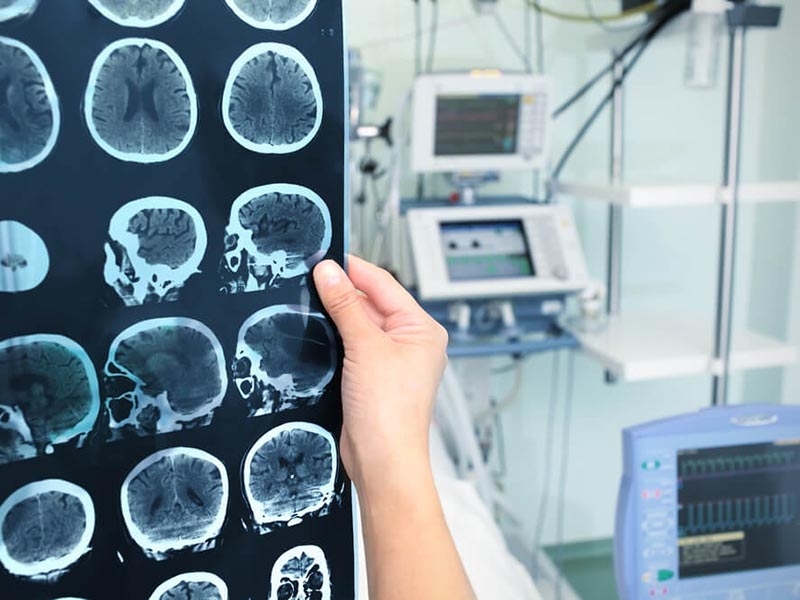
Electroencephalogram
Watch our video about Electroencephalogram
What is an Electroencephalogram?
An Electroencephalogram (EEG) is a diagnostic test that measures and records the electrical activity of the brain using small electrodes attached to the scalp. This non-invasive procedure captures brain wave patterns, providing valuable insights into the functioning of the central nervous system.
At Clinic Consultation, we offer state-of-the-art EEG services performed by skilled professionals. This test is crucial for diagnosing neurological conditions and monitoring brain activity in both routine and emergency settings.
What is an Electroencephalogram Used For?
EEGs are used to detect abnormalities in brain wave activity that may indicate neurological conditions. It is particularly valuable for diagnosing seizures, epilepsy, and other disorders affecting brain function. The test also plays a role in assessing brain activity in comatose patients or monitoring the effects of treatments like anaesthesia.
In addition to diagnostic purposes, EEGs are often used in research and clinical trials to study brain functions. At Clinic Consultation, we ensure that every EEG is tailored to the patient's specific needs, providing detailed and reliable results.
How Does an Electroencephalogram Work?
During an EEG, small, flat electrodes are placed on the scalp using a conductive gel. These electrodes detect electrical impulses generated by the brain’s neurons, which are then amplified and recorded by a computer. The procedure is painless and typically lasts 30-60 minutes, though longer recordings may be required for specific conditions.
Patients are usually asked to relax and may be instructed to perform certain tasks, such as opening and closing their eyes or hyperventilating, to observe brain activity under different conditions. At Clinic Consultation, we prioritise patient comfort and ensure a smooth and efficient process.
What Are the Types of Electroencephalogram?
EEGs can be categorised into several types based on their purpose and recording duration:
Standard EEG
A routine test that lasts about 20-40 minutes, used to evaluate general brain activity. It is often performed in outpatient settings to diagnose conditions like epilepsy.Ambulatory EEG
A portable EEG device is worn by the patient to record brain activity over 24-72 hours during normal daily activities. This is particularly useful for detecting intermittent events such as seizures.Sleep EEG
Conducted while the patient is asleep, this test provides insights into sleep-related disorders or conditions that are more apparent during sleep, such as nocturnal seizures.Video EEG Monitoring
Combines EEG recording with video footage to capture physical behaviours during abnormal brain activity. This is often used in epilepsy diagnosis or pre-surgical evaluations.Continuous EEG Monitoring
Performed in intensive care settings to monitor brain activity in critically ill or comatose patients.Evoked Potentials
A specialised EEG that measures brain responses to specific stimuli, such as visual or auditory signals.
At Clinic Consultation, we offer a range of EEG options to address diverse diagnostic needs.
What Conditions Can Be Detected Through an Electroencephalogram?
EEGs are instrumental in diagnosing a variety of conditions, including:
Epilepsy
Identifies abnormal electrical activity associated with seizures.Sleep Disorders
Detects issues like sleep apnoea or insomnia-related brain wave changes.Head Injuries
Evaluates brain function after traumatic brain injuries.Brain Tumours
Assesses changes in electrical activity caused by tumours.Stroke
Identifies areas of the brain affected by impaired blood flow.Dementia
Detects abnormalities in brain activity linked to cognitive decline.Coma or Brain Death
Assesses residual brain activity in unconscious patients.
When is an Electroencephalogram Indicated?
EEGs are recommended in various scenarios:
Unexplained Seizures
To confirm epilepsy or other seizure disorders.Memory Loss
To evaluate underlying neurological causes.Persistent Headaches
When associated with other neurological symptoms.Sleep Problems
To diagnose conditions like narcolepsy or nocturnal epilepsy.Monitoring Brain Health in ICU Patients
To assess brain activity in critical care settings.Post-Traumatic Brain Injury
To evaluate the impact of head injuries on brain function.Behavioural Changes
To investigate sudden mood or behaviour shifts potentially linked to neurological issues.
Pre- and Post-EEG Care
Before the Test:
- Wash your hair the night before the test to remove oils or hair products that may interfere with electrode placement.
- Avoid caffeine and any stimulants for 8-12 hours prior to the test.
- Inform your doctor about any medications you are taking, as some may need to be adjusted.
After the Test:
- There are no significant post-test restrictions, and normal activities can be resumed immediately.
- If a sedative was used, arrange for someone to drive you home.
- Discuss the results with your doctor to understand any findings and next steps.
What Are the Contraindications for Electroencephalogram?
EEGs are generally safe, but certain conditions may limit their effectiveness:
- Skin Conditions on the Scalp: May interfere with electrode placement.
- Severe Anxiety or Discomfort: Patients may find it challenging to remain still during the test.
- Implanted Electrical Devices: Such as pacemakers, which may affect recordings.
At Clinic Consultation, we address these concerns and ensure safe and effective testing for all patients.
What Are the Alternatives to Electroencephalogram?
For patients unable to undergo EEG testing, alternative methods include:
- MRI or CT Scans: Provide structural imaging of the brain.
- PET Scans: Assess metabolic activity in the brain.
- Neurological Exams: Evaluate brain function through physical and cognitive assessments.
Our specialists at Clinic Consultation guide patients in selecting the most appropriate diagnostic method for their needs.
Book Your Electroencephalogram at Clinic Consultation
An Electroencephalogram is a powerful tool for understanding brain activity and diagnosing neurological conditions. At Clinic Consultation, we combine advanced technology with compassionate care to deliver accurate and comprehensive results. Schedule your EEG online today and take an essential step towards better neurological health.
Click here to schedule an appointment online